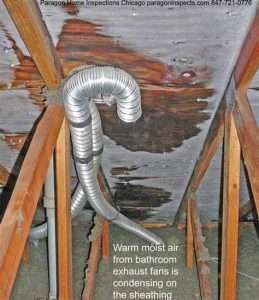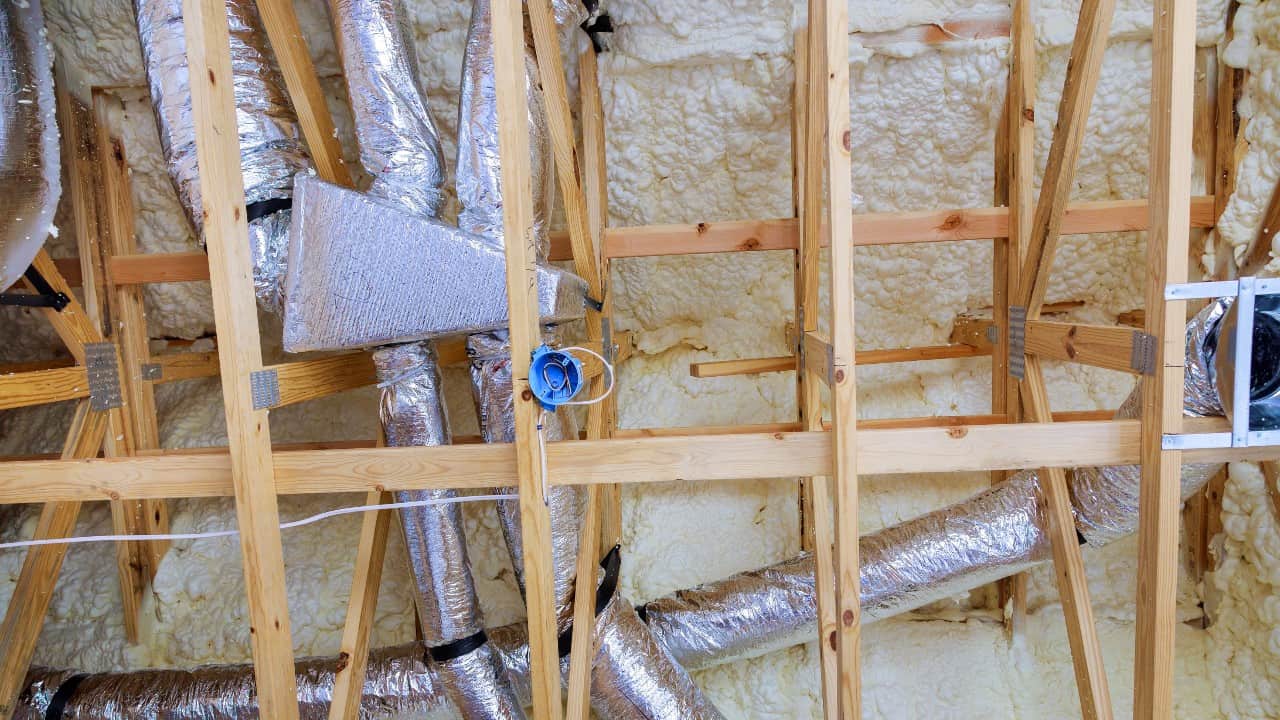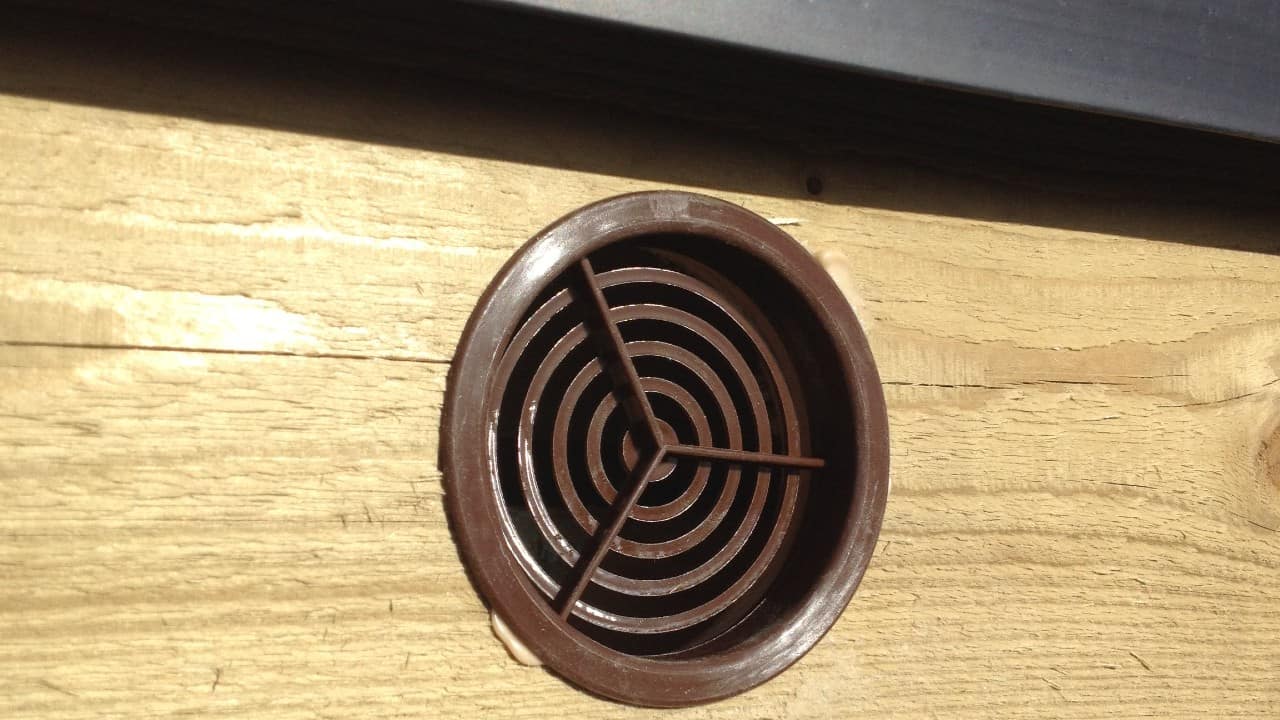My Bathroom Vents into Attic, Is That Correct?
Have you ever gone into your attic only to be blasted with warm, musty air? You might find that your bathroom vents into attic. If your home has bathroom fans, chances are that air is coming from your bathroom vents. But is that really how it’s supposed to work? We find these issues during home inspections in South Florida all the time. Let’s take a look at the anatomy of a bathroom vent and find out.
Many people don’t know that their bathroom vents into attic
Installation must adhere to the bathroom vent to attic code for your area. Have you ever paused to think about where your home’s bathroom vents go? You might be surprised to learn that they lead right up into the attic in many cases! Bathroom ventilation is incredibly important for preventing moisture buildup and improving air quality – so if your vents are pointing up, chances are they terminate somewhere near the top of your home. It’s worth checking to ensure that no unwanted humidity or mold has built up in those dark corners of the attic. Who knows – you might even learn a few things about little-known features of your own home in the process!
If your bathroom vents into attic, it could be causing mold and mildew to form
If you see something like this in your home or home inspection report, don’t delay in fixing it. Venting a bathroom fan into the attic may seem like a cost-effective option when venting a bathroom, but it can be more problematic than you might think. When moisture from a steamy and humid shower ventilates directly into an attic, it can drastically increase humidity levels and in turn, cause mold and mildew to form. There are potential health implications with this, especially for individuals with respiratory or immune system problems. So if your bathroom vent is going into your attic, you’ll want to take measures to properly ventilate or switch to other venting options sooner rather than later.
You can check to see if your bathroom vents into attic by taking a look at the ductwork
Checking to see if bathroom vents are going into your attic can give you peace of mind regarding the health and safety of your home. It’s easy to do – all you need to do is take a good look at the ductwork in your bathroom. It may seem like a small step, but this could save you some trouble down the road with potential water damage or mold growth due to bathroom moisture buildup. If you do find that your bathroom vents into attic, you may need contact a professional to have it fixed.
Different types of bathroom vents
Shopping for the perfect bathroom vent can be a daunting task with the variety of different types available. From ceiling models to wall fans, louvers, and ridge vents, you have plenty of potential for your bathroom ventilation needs. Ceiling models are great for providing a discreet way to move air throughout the room, while wall fans provide convenient features such as lighting, adjustable speed controls, and adjustable timers so you can automate your system when needed. Louvers are preferred in areas with extreme weather conditions but can also be used as an added layer of protection against heavy moisture in humid rooms. Finally, ridge vents provide recessed placement on residential roofs to keep air moving and avoid backups in smaller spaces. So no matter what type of bathroom vent you select, make sure it fits your home’s needs.
How to Resolve That The Bathroom Vents into Attic
Installing a bathroom fan can seem like an intimidating task, but it doesn’t have to be. With the right tools and materials, you can install a bathroom fan in no time and enjoy the comfort of clean air in your home. Here are some steps that you should follow to make sure your installation is successful.
First, prepare your materials: You will need a ventilation fan, two adjustable clamps, screws, and sealant. Make sure all of these items are available before beginning the installation process. If you need additional supplies such as wiring or ductwork, consult with a professional to ensure your safety.
Second, create an opening for the fan: Measure and mark where the fan will go on the ceiling or wall. Use a drywall saw to cut out an opening that is slightly larger than the fan box—this will give you extra space for any adjustments that may come up during installation. Once you’ve made the opening, use sealant to create an airtight fit around the edges of where the fan will be installed.
Third, mount the fan: Position the fan in its designated spot and secure it with adjustable clamps or screws (if necessary). For extra noise reduction, add insulation strips or soundproofing foam around the edges of where it’s mounted.
Fourth, wire up your new bathroom vent: Wiring should be done by a qualified electrician for safety reasons. Consult with them about which type of wiring would be best for your needs—some fans require specialized wiring connections while others may require only basic wiring connections like those found in other household appliances. After connecting all wires according to manufacturer instructions (or as recommended by an electrician), cover them with appropriate electrical boxes or conduit for protection against damage over time.
Finally, test out your new vent: Turn on your bathroom vent and ensure it is functioning as intended without any strange noises or leaks from areas where air should not escape. If everything looks good, then congratulations! Your new bathroom ventilation system is now officially operational!
The cost of repairing a bathroom vent can vary greatly depending on several factors such as the size and type of fan, the complexity of the job, and any additional materials that may be necessary. Generally speaking, it’s best to hire a professional for this kind of work. For example, replacing an old fan with a new one may range anywhere from $100-$300 depending on the size and type of fan. However, if you need to make repairs or install an entirely new ventilation system, costs can quickly balloon up to $500-$2,000 or more. In some cases, the entire ventilation system will need to be replaced which can cost upwards of $3,000 in labor and materials.
How to vent a bathroom with no outside access
One way to vent a bathroom with no outside access is by using an air admittance valve (AAV). AAVs are one-way valves that allow air to enter the plumbing system but not be expelled back out. This means that when the water goes down, it creates a vacuum that causes bad odors and gases to be pulled back through the AAV and expelled outside. This prevents them from entering the room, thus eliminating any bad smells or fumes. These valves can be easily installed and require very little maintenance, making them a great choice for bathrooms with no outside access. Another option is to use an inline fan, which pulls air from within the bathroom and expels it outside.
How to vent a bathroom fan through the roof
If you need to vent a bathroom fan through the roof, the first step is to make sure there is adequate ventilation in the attic space. This involves making sure that there are enough vents along the eaves and at the peak of your roof so that air can flow freely throughout the area. Once you have this established, you can install an inline fan in the attic near the bathroom ceiling. This fan should be rated for your specific ventilation needs and will draw air from inside the bathroom, through ductwork, and up to the roof where it can escape safely.
Once you have installed the inline fan, run a length of flexible or rigid aluminum dryer venting from the outlet side of the fan and up to the roof. Depending on your roof type, you will have to use either wall or roof flashing (or both) to ensure a watertight seal between the venting and the roof itself. Make sure that any seams are caulked with a high-quality silicone caulk so that no moisture can enter through them.
Once the fan and venting are in place, turn it on to make sure everything is working properly. Regularly inspect the area around the fan and venting for any signs of debris or water leaks, as these can cause significant damage over time. Also, be sure to have your inline fan serviced at least once a year so that it can continue to provide the necessary ventilation for your bathroom.
I’ve been asked is it ok to vent bathroom fan into soffit, it’s possible but may not be the solution you want to go with.
While connecting your bathroom exhaust vent to the soffit vents might seem like an easy solution that eliminates any roof-related risks, it is best if you can avoid this option. If you choose to go through with a connection via the soffit vent, be aware that there could be disruptions in the airflow of your entire ventilation system.
The suction effect caused by the warmer air in the attic results in a system that works; because it is lighter than colder air outside, warm air rises. If you introduce bathroom air into this atmosphere, however, everything will be thrown off balance and soffit vents become ineffective.
Repairing Bathroom Vent
Aside from labor costs you also need to consider other associated costs such as purchasing additional supplies like soundproofing foam or insulation strips that may be necessary for your particular installation. You’ll also need to factor in any permits required by local building codes. Plus, if you’re dealing with complex permitting requirements then expect that total cost to go up even further due to higher labor costs.
When considering repair versus replacement options keep in mind that repairing an existing system is often much cheaper than replacing it altogether. If your fan is old but otherwise still in good condition then consider having a professional come out and take a look before making any decisions about replacements. It’s important to note however that most professionals recommend that fans be replaced every 10-15 years regardless of condition due to normal wear and tear as well as potential safety concerns due to outdated technology or design flaws.
Overall, bathroom vent repair costs can vary greatly depending on the complexity of the job and whether or not parts need to be replaced or installed from scratch. It’s always best practice to contact a professional who can assess your particular situation and offer advice about how much it would cost for them personally do complete the work—this will help ensure that you get quality work done at an affordable price without sacrificing safety standards or compromising your home’s air quality in any way!
Summary: Bathroom Fan Vents Into Attic
Just to toss it in here, I’ve even seen bathroom vent into attic, soffit. Either way, we hope you found this post helpful in clarifying whether or not your bathroom vents into attic.
Your may also enjoy “Vent Stack vs Stacj Vent”; Learn What They Are”. Click here to check it out.
If you have any further questions, please don’t hesitate to reach out and contact us. We would be happy to help clarify anything that may still be unclear. Thank you for reading!









Pingback: home care